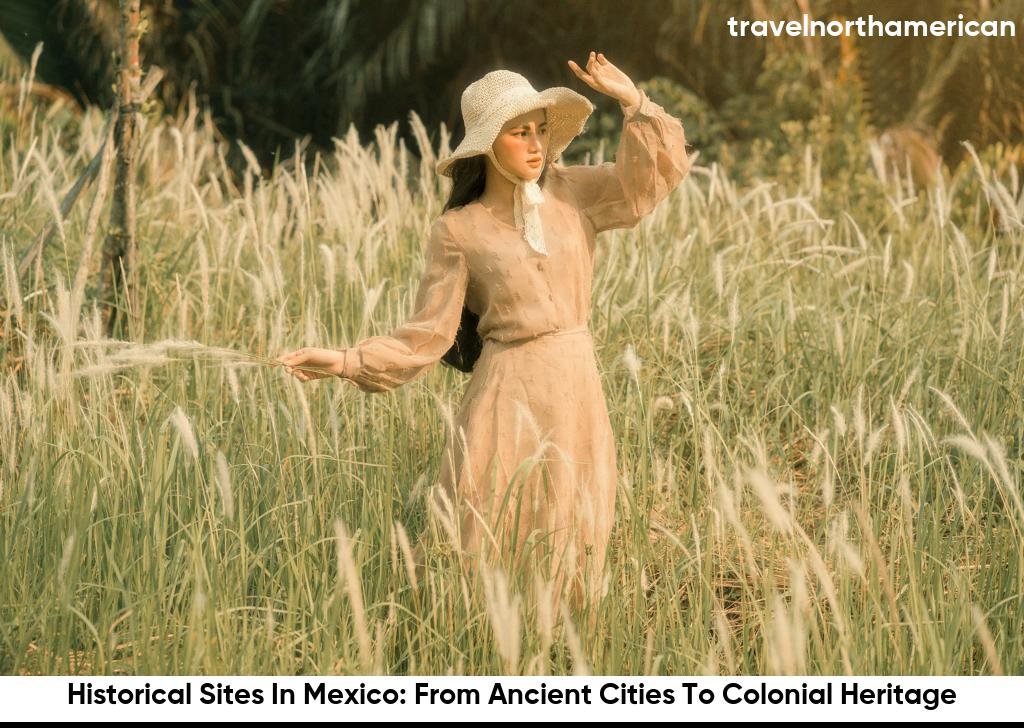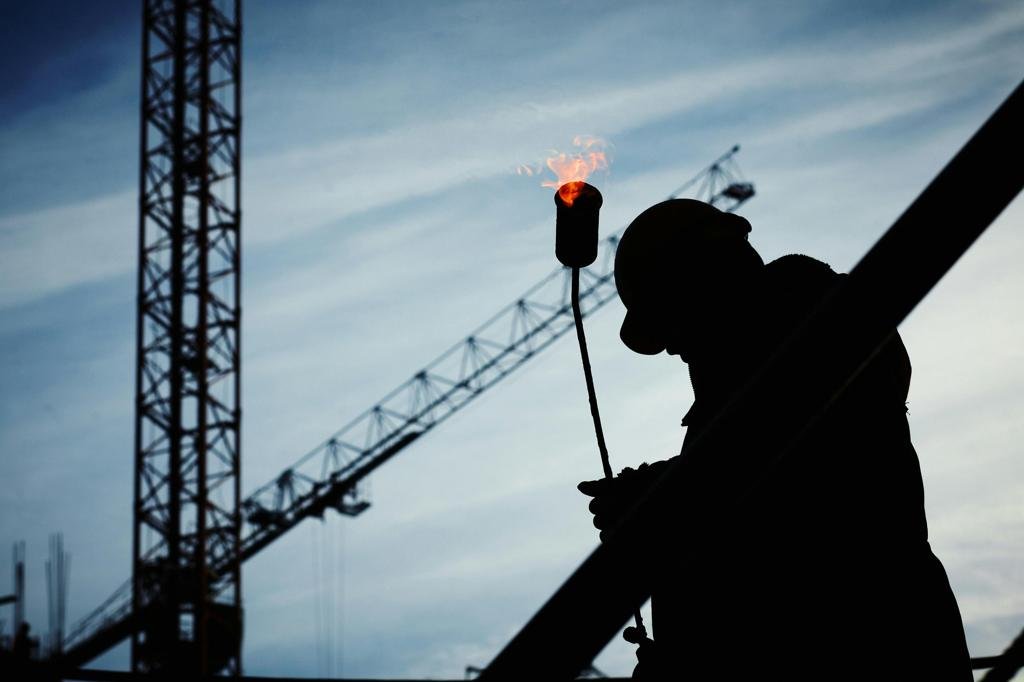Explore Mexico’s rich history through its ancient cities and colonial treasures, where vibrant cultures and stunning architecture tell stories of the past.
Mexico is a land steeped in history, where ancient civilizations and colonial legacies weave a vibrant tapestry of culture and architecture. From the majestic ruins of Teotihuacan and the intricate stone carvings of Chichen Itza to the colorful streets of colonial cities like Guanajuato and Oaxaca, each site tells a compelling story of resilience and innovation. As you journey through this diverse landscape, you’ll encounter not only the remnants of powerful empires but also the enduring influence of Spanish colonization. Explore with us the remarkable historical sites that continue to captivate the imagination of travelers and historians alike.

Ancient Mayan Ruins in Mexico: Exploring the Mysteries of Chichen Itza
Chichen Itza, one of the most iconic archaeological sites in Mexico, invites visitors to delve into the mysteries of the ancient Mayan civilization. This UNESCO World Heritage site captivates with its grand architecture and rich history. As you walk through the well-preserved ruins, you can admire the awe-inspiring El Castillo pyramid, which showcases the Mayans’ advanced understanding of astronomy. The Equinox phenomena, where the shadow of the pyramid resembles a serpent slithering down its steps, continues to amaze and intrigue. Surrounding the pyramid, various other structures like the Temple of the Warriors and the Great Ball Court provide deeper insights into Mayan culture and society. Exploring Chichen Itza not only enriches your knowledge of ancient civilizations but also allows you to experience the fascinating connection between nature, architecture, and astronomy that defines this remarkable site.
Aztec Temples: A Glimpse into Mexico’s Indigenous History
Aztec temples stand as monumental testaments to Mexico‘s rich indigenous history. These structures, often adorned with intricate carvings and vibrant murals, tell stories of a civilization that revered its gods and celebrated life through ritual and sacrifice. Some key sites include:
- Templo Mayor: Located in the heart of Mexico City, this central temple was dedicated to the Aztec gods Huitzilopochtli and Tlaloc. Excavations revealed layers of history that highlight the temple’s significance in Aztec religious life.
- Teotihuacan: Although often associated with the Aztecs, this ancient city features impressive pyramids such as the Pyramid of the Sun and the Pyramid of the Moon, showcasing the architectural prowess of its earlier inhabitants.
- Cholula: Home to the Great Pyramid, often considered the largest pyramid by volume in the world, Cholula’s temple complex not only reflects the Aztec culture but also the fusion of various indigenous traditions.
Visiting these temples allows you to immerse yourself in the spiritual and cultural narratives that shaped ancient Mexico. Each structure unveils layers of indigenous history and sparks curiosity about the people who created them, inviting a deeper appreciation for Mexico‘s diverse heritage.

Colonial Architecture in Mexico: Walking Through the Streets of Puebla
Puebla, one of Mexico‘s most picturesque cities, offers a stunning showcase of colonial architecture. As you stroll through the streets, you are enveloped in vibrant colors, intricate tilework, and majestic churches that tell the stories of the past. The city was established in 1531 and has maintained its historical charm. The architectural styles range from Baroque to Neoclassical, providing visitors with a visual feast.
| Building | Style | Year Built | Description |
|---|---|---|---|
| Catedral de Puebla | Baroque | 1575 | This is the first cathedral built in Mexico and features stunning altarpieces and chapels. |
| Capilla del Rosario | Baroque | 1690 | Considered a masterpiece, it showcases exquisite interior decorations and intricate gold leaf details. |
| Palacio de Gobierno | Neoclassical | 18th Century | The government palace displays a grand facade with beautiful murals depicting regional history. |
As you explore Puebla, don’t forget to admire the charming alleyways adorned with traditional pottery and plants. Experience the unique blend of Spanish and indigenous influences that have shaped this beautiful city.
UNESCO World Heritage Sites in Mexico: Preserving Cultural Treasures
Mexico is home to an impressive array of UNESCO World Heritage Sites that reflect its rich history and diverse culture. These sites preserve the legacies of ancient civilizations, colonial influences, and natural wonders. Each site tells a story and represents a unique aspect of Mexico‘s heritage.
| Site | Year Inscribed | Significance | Location |
|---|---|---|---|
| Teotihuacan | 1987 | Known for its monumental pyramids and urban planning, it illustrates the achievements of Mesoamerican culture. | State of Mexico |
| Historic Center of Mexico City | 1987 | A blend of ancient Mesoamerican and colonial architecture, highlighting the evolution of the capital. | Mexico City |
| Chichén Itzá | 1988 | This archaeological site showcases the Mayan civilization’s astronomical and architectural achievements. | Yucatán |
These UNESCO sites not only attract tourists from all over the world but also play a crucial role in protecting and promoting Mexican cultural heritage. By visiting these places, you engage with the past and help preserve it for future generations. Each site is a treasure trove waiting to be explored, offering insights into the historical narrative of Mexico.

Teotihuacan: The City of Gods and its Impressive Pyramids
Teotihuacan, often referred to as the City of Gods, stands as a monumental testament to ancient Mesoamerican civilization. Located just outside Mexico City, this archaeological gem features some of the most iconic structures in the world, including the Pyramid of the Sun and the Pyramid of the Moon. Visitors can walk along the Avenue of the Dead, immersing themselves in a vibrant past filled with culture, religion, and advanced urban planning. As you explore the site, you witness the ingenuity of the Teotihuacanos who built these magnificent structures, utilizing resources from the surrounding area. The alignment of the pyramids with celestial bodies reflects their deep spiritual beliefs, inviting modern-day travelers to ponder the mysteries of this ancient civilization.
Spanish Conquistadors and the Legacy of Mexico’s Conquest
The Spanish conquest of Mexico in the early 16th century left a profound impact on the region’s culture, language, and identity. Led by figures like Hernán Cortés, the conquistadors sought wealth and land, driven by the promise of gold and glory. Their arrival marked a turning point in Mexican history, as they imposed European customs and Christianity upon the indigenous peoples. This complex legacy includes:
- Cultural Syncretism: The fusion of indigenous and Spanish cultures gave rise to unique traditions, art forms, and culinary delights, enriching Mexico‘s cultural landscape.
- Religious Transformation: The introduction of Catholicism fundamentally altered spiritual practices among native populations, leading to a blend of pre-Hispanic and Christian beliefs.
- Language Influence: Spanish became the dominant language, yet many indigenous languages and dialects persist, reflecting the country’s diverse heritage.
- Social Hierarchies: The colonial era established a social structure that favored Europeans and created lasting inequalities that resonate in modern Mexican society.
Today, the legacy of the Spanish conquest remains a subject of study and reflection, creating a dynamic interplay between history and contemporary identity in Mexico.

Palenque: Uncovering the Enigmatic Mayan City in the Jungle
Nestled deep within the lush jungles of Chiapas, Mexico, Palenque stands as one of the most intriguing archaeological sites of the ancient Maya civilization. This ancient city, which flourished during the classical period from around 600 to 900 AD, showcases an impressive array of architecture and inscriptions that continue to captivate historians and archaeologists alike.
Palenque is particularly renowned for its stunning temples and palaces, which feature intricate carvings and hieroglyphics. Visitors can explore:
- The Temple of the Inscriptions, housing one of the most significant burial sites of a Mayan ruler.
- The Palace, a sprawling complex with ceremonial rooms and unique architectural features.
- The Temple of the Sun, offering spectacular views of the surrounding jungle.
Discovering Palenque allows you to experience the rich cultural heritage of the Maya, characterized by their advanced knowledge in mathematics, astronomy, and art. The site’s current excavation efforts continue to reveal more about the daily lives and spiritual beliefs of its ancient inhabitants, making it a must-visit for anyone interested in history and archaeology.
Baroque Churches in Mexico: A Blend of European and Indigenous Styles
The Baroque period in Mexico saw the integration of European architectural styles with indigenous influences, giving rise to stunning churches that reflect the country’s rich cultural tapestry. These churches, built primarily from the 17th to the 18th centuries, showcase elaborate designs, intricate altarpieces, and monumental facades that tell stories of faith and artistry.
Highlights of Baroque architecture in Mexico include:
| Church Name | Location | Notable Features |
|---|---|---|
| Templo de San Francisco | Querétaro | Stunning façade with twisted columns. |
| Cathedral of Puebla | Puebla | Beautiful altarpieces and high ceilings. |
| Templo de Santo Domingo | Oaxaca | Ornate interior and impressive gold leaf work. |
These churches not only serve as places of worship but also as testament to the remarkable blending of cultures. Each structure embodies a unique narrative, merging Spanish Baroque artistry with indigenous craftsmanship, resulting in masterpieces that continue to inspire awe and admiration.

Monte Alban: The Ancient Zapotec Capital in Oaxaca
Monte Alban stands as a testament to the ingenuity and architectural prowess of the Zapotec civilization. Located on a strategic mountain top overlooking the Oaxaca Valley, this ancient city flourished between 500 BCE and 750 CE. Visitors can explore its impressive terraced structures, grand plazas, and intricately carved stone monuments. The site features remarkable features such as the ball court and the tombs adorned with elaborate carvings that provide insights into the culture and rituals of the Zapotecs. As you walk through this ancient city, you can easily feel the vibrant history resonate in the air, enveloping you in the mysteries of a civilization that played a pivotal role in Mesoamerica’s history.
Haciendas of Mexico: Tracing the History of Colonial Plantations
The haciendas of Mexico represent a significant chapter in the country’s colonial history. These expansive agricultural estates emerged during the Spanish colonial period and became vital centers for the production of various crops and goods. The haciendas are not only architectural wonders but also embody the complex social structures of the time. Many haciendas feature beautiful colonial-era architecture, including large homes, chapels, and enclosed courtyards. Visitors today can explore these impressive estates to better understand their historical significance and cultural heritage.
- Important Haciendas:
- Hacienda San Antonio: Known for its stunning landscapes and coffee production.
- Hacienda de Chichén Itzá: Famous for its historical importance and proximity to the iconic Mayan ruins.
- Hacienda La Esmeralda: Renowned for its rich history and beautiful architecture.
Experience the allure of these haciendas as you delve into the agricultural legacy and the transformation of social dynamics that shaped Mexico‘s rural communities.

